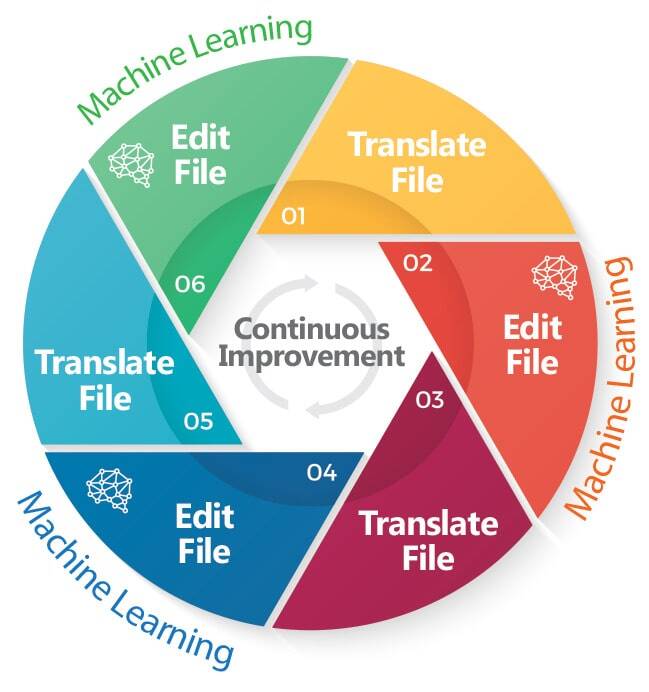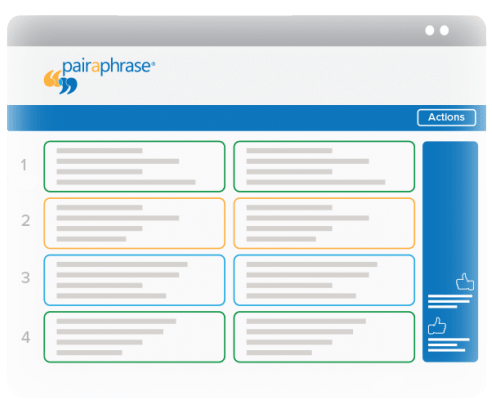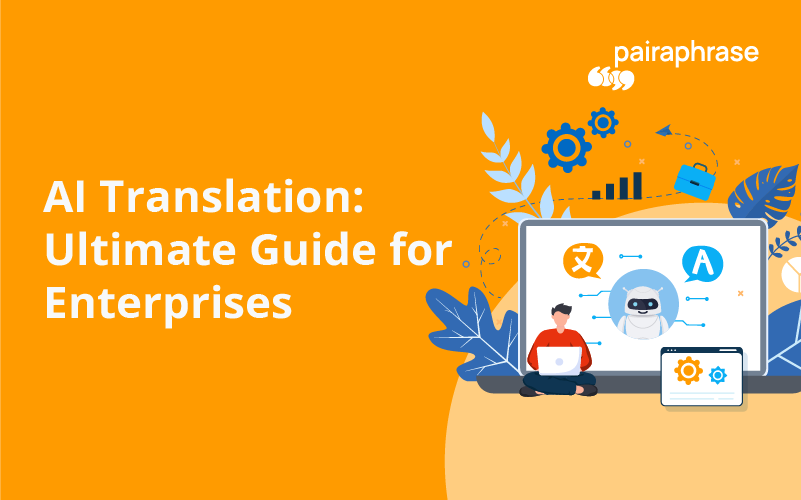AI language translation has become increasingly popular, especially as AI is now one of the hottest topics of conversation in the tech world and beyond. Organizations are widely using OpenAI's ChatGPT, Google's Gemini, Perplexity, Claude, DeepSeek and more to produce generative text translations.
Historically speaking, organizations have heavily relied on human translators to perform high-quality translations for them. Once the world experienced the emergence of internet-based Machine Translation in the early 2000’s, many organizations (not all) became too dependent on Machine Translation engines.
This oftentimes meant translation quality was sacrificed in the name of time and cost savings. For years, Machine Translation has operated in a silo. Until recently.
Understanding AI Translation
What is AI in Translation?
AI in translation refers to the use of artificial intelligence to automate and enhance the process of translating text from one language to another.
This includes the utilization of Large Language Models (LLMs) like those developed by OpenAI, which are capable of understanding and generating human-like text. Tools like OpenAI’s ChatGPT also show how AI can be applied to language translation, providing you with quick and contextually relevant translations.
For more insights, check out our rundown of the pros and cons of translating with OpenAI.
With more translation trends involving LLMs, Neural Machine Translations (NMTs), and the use of popular forms of generative AIs, we have arrived at a point where using AI does not mean sacrificing the quality of your translation.
The Intersection of AI & Language Translation
Enterprises that are increasingly focused on their bottom line seek cost and time savings by way of artificial intelligence, as our society gradually becomes more and more dependent on AI. Language translation is no exception.
The intersection of machine learning and language translation is helping businesses and other organizations across the world access new audiences, facilitating international growth more efficiently than ever before possible.
Now, you too can put artificial intelligence to work for your business to streamline your translation production, in effect maximizing your time and money. We’re about to tell you how.
How to Use Dynamic Machine Learning to Save Time & Money
In order to reap the benefits of artificial intelligence used in language translation, you must first understand how Machine Translation software uses machine learning.
You can’t assume that every translation system is using machine learning, so we’ll use our platform, Pairaphrase, as an example.

How Pairaphrase Uses Dynamic Machine Learning
Many Machine Translation engines are based on frameworks such as Microsoft and Google, but not all of them have been integrated into a platform that allows for machine learning.
For example, as of today’s date you cannot train the Google Translate app to learn your company’s words and phrases to improve your translation output quality over time. In contrast, the Pairaphrase application puts machine learning to use in a dynamic way.
As machine learning requires some form of user input, Pairaphrase requires humans to intervene after translation has been predominantly performed by a Machine Translation engine.
After producing a first draft translation by way of Machine Translation and Translation Memory (will get to this momentarily), the user trains Pairaphrase to learn its words and phrases by making edits.
Save Time Spent on Translation
Pairaphrase facilitates this by dividing a “first draft” translated file up into segments presented in a Translation Editor tool within the interface.
The user or a bilingual colleague can then make edits to the “first draft” translated file by segment. The system automatically searches for matches of the just-edited segment and will apply that edit dynamically, across the whole file.

Save Money for the Long Run
The edits are then stored for future automatic use and machine learning in a bilingual repository called a user’s Translation Memories.
As a user makes more edits over time, they are increasing training their Machine Translation engine. This results in more expansive Translation Memories, and the application increasingly learns the phrases and words the user and its organization uses in their files.
These are auto-populated for future translations in the “first draft” process, during which the Machine Translation engine pulls existing translation memories into the file where appropriate. As time moves on, there is increasingly less human interference required to produce human-quality translations.
So how does this work? How are modern language learning models revolutionizing the way translations maintain quality and efficiency?
Here's how this works in the context of Pairaphrase:
Leveraging Large Language Models (LLMs)
Large Language Models (LLMs), such as those developed by OpenAI, play a role in enhancing the capabilities of Pairaphrase's Machine Translation engine. These models are trained on vast datasets, enabling them to understand and generate human-like text with high quality using deep learning techniques.
By incorporating LLMs for translation, Pairaphrase provides more nuanced and contextually appropriate translations, saving time for edits.
Integrating Generative AI
Generative AI (GenAI) techniques, which involve creating new content based on existing data, are also integrated into Pairaphrase's translation process. This allows the system to not only translate text but also generate new phrases and sentences that align with your preferred style and terminology.
Generative AI can also collaborate with certain aspects of Terminology Management and Translation Memory. This enhances the flexibility and adaptability of the translation engine while maintaining your voice and brand goals.
Related reading: Explore the best ChatGPT prompts for translation.
OpenAI and the Future of AI Translation
Lastly, OpenAI's contributions to the field of AI language translation have been transformative.
With ongoing advancements and integrations, such as the integration of OpenAI into Pairaphrase, cutting-edge AI-driven research is now available at your fingertips. It can enhance the overall quality, understanding, and efficiency of your translations one step further.
Learn more about what makes Pairaphrase the best AI translation software available.
How to Train Your Machine Translation Engine: Step-By-Step
Now that you know the logic behind Dynamic Machine Learning, we’ll show you a step-by-step video to follow so you can learn how to train your Machine Translation engine using Pairaphrase.
Dive deeper: Explore the best translation engine to use for your situation.
Benefits of AI and Translation
AI in translation offers numerous benefits, including improved translation quality and faster processing times.
In addition, AI-powered translation tools can often handle large volumes of text and provide real-time translation services, which are invaluable in global business communications. Even tedious files that are often difficult to translate, like PDFs and Google Docs, become easier to manage.
If you’re curious to go a step further, learn more about how you can get the best translation quality with Machine Translation.
Optimizing Your Translation Process
Cheat Sheet for Improving Machine Translation Quality
The cheat sheet in How to Improve Machine Translation Quality teaches you how to improve your Machine Translation quality by tweaking the way you write your source files.
This will help minimize how much time you need to spend training the Machine Translation engine in the first place, because the writing style will be better understood by a Machine Translation engine.
How to Use as Little Human Involvement as Possible in Language Translation
If you have an existing Translation Memory, you can upload this as soon as you start using Pairaphrase. The application acts as an AI translator to jumpstart your team's productivity and translation quality.
You can also develop a term base glossary and import it.
However, you will need to dedicate a little more time upfront by creating Machine Translation optimized glossaries.
Experience the Benefits of Using AI in Translation
Want to get started with high-quality AI translation? Try Pairaphrase. It’s the AI Translation Management System for teams that value smarter, faster and safer translation.
Pairaphrase supports 140+ languages and 20,000+ language pairs including Spanish, French, German, Arabic, Hindi, Chinese, Japanese and more. Not to mention, it performs file translation for 25 file types.



.png)

.png)




